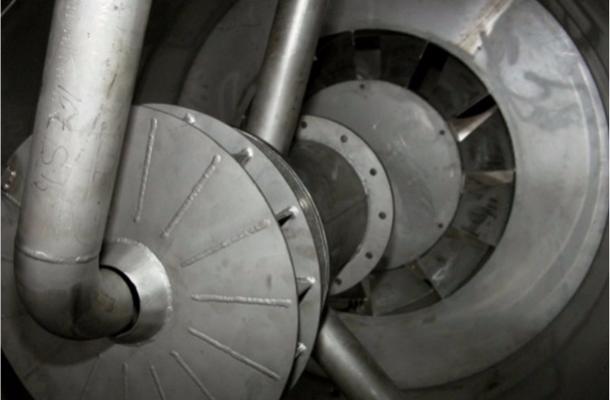Rotary scrubber
The contaminated gas enters the rotary scrubber tangentially at the bottom part of the apparatus. Under the action of centrifugal force starts the capture of the largest particles of the gas phase. Then the gas flow passes the section of the vanes, which increases the rotation speed of the gas phase creates a turbulent regime, greatly increasing the surface mass transfer and convective diffusion.
Scrubbing liquid is fed over the guide vanes, the interaction of the gas and liquid phases is carried out in counterflow. Next, the gas stream increases the speed of rotation and interacts with the particulate phase of the scrubbing liquid spray spray device that enables fine purification of the gas phase. Caught thus, contaminants contained in the droplets of scrubbing liquid are discarded to the walls of the scrubber where the flow into the circulation tank and then circulating pump scrubbing liquid is re-fed to irrigation. If necessary, is added to makeup water.
Questionnaire
download
Advantages:
High separation efficiency, fine purification
Stable operation by the gas flow fluctuations
Low hydraulic resistance
Low operating costs
Scope of application:
mining processing industry, metallurgical industry
chemical, petrochemical and related industries - recovery of aerosols (aerosol capture) and adsorption of contaminants (pollutants)
Scheme of gases purification after pyrolysis process

Design features and principle of operation our proposed rotary scrubber:
Sequential contact of gas and liquid phas
Adsorbtion and dust collection simultaneous processes
Stable operation with high viscosity, colistimethate substances (efficiency of 99.999 %)







